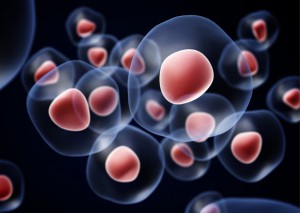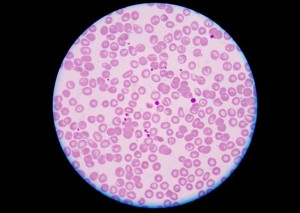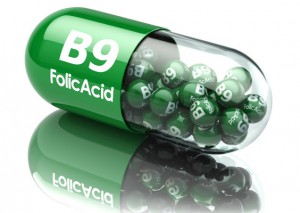
Are you a baseball fan? Even if you’re not, you have to admire New York Mets pitcher Bartolo Colon.
His comeback has been nothing short of miraculous — thanks to the amazing healing power of stem cells and platelet-rich plasma (PRP) therapy.
PRP utilizes platelets from an athletes’ own blood to rebuild a damaged tendon or cartilage.
I began offering PRP therapy at my Sears Institute for Anti-Aging Medicine a few weeks ago and the results I’ve seen from this therapy have just been incredible.
Five years ago, Colon was considered washed-up at age 37. His pitching arm was shot. He had severe ligament damage and a torn rotator cuff. And his fastball was down to 75!
Doctors told him his career was over.
But in just two weeks, the now 42-year-old Colon was on the mound pitching in this year’s World Series. And his fastball is back to a blistering 90 mph-plus.
After missing the 2010 baseball season due to injury, Colon reached out to Dr. Joseph Purita, my colleague and a featured speaker at my recent Palm Beach Anti-Aging Summit.
Dr. Purita is one of the world’s leading stem cell therapy and PRP experts. And his use of both therapies on the great Met’s pitcher is without a doubt reason behind his late-career comeback.
Potent One-Two Punch
If you’re a regular reader, you’re familiar with stem cells. They’re the reserve of “replacement cells” you’re born with. These stem cells are blank slates that can be used to replace any kind of cell that’s damaged, old or dying.

But the problem is that you lose them as you age.
Stem cell therapy harvests the healthy cells from your body and reintroduces at the point of injury.
Dr. Purita harvested stem cells from Colon’s fat and bone marrow and injected
them into his elbow and shoulder to repair his ligament damage and his torn rotator cuff.But he didn’t stop there. He also performed platelet-rich plasma (PRP) therapy on the pitcher.
Platelets are colorless blood cells that help your blood clot. But they have the power to do much more.

Platelets also contain hundreds of proteins called “growth factors.” The natural growth factors in PRP are critical in key stages of wound healing. And they can actually regenerate injured tissues.i
To make PRP, your blood is run through a centrifuge to separate red blood cells from plasma with a high concentration of platelets.
The growth factor proteins from all those platelets help heal wounds at least two to three times faster than normal.
Through the powerful one-two punch of stem cell therapy and PRP, Dr. Purita was able to help an “over the hill” athlete with insurmountable injuries to return to his glory days.
Many of my patients tell me they feel like they’ve returned to their glory days, too.
Dr. Purita and I both believe that one day these breakthrough therapies will replace surgery altogether for most orthopedic problems, including arthritis, inflamed tendons, torn muscles, injured ligaments, and damaged joint cartilage.
All-Natural Stem Cell Boosters
You don’t have to be a professional athlete to take advantage of the healing power of your stem cells and platelets.
There are two nutrients you can take to start boosting your supply of both today…
- Get some vitamin D. Research shows that vitamin D can boost stem cell production and treat low platelet disorder.iiiii
 I recommend getting 5,000 IUs of vitamin D daily. The easiest way is to get 15-20 minutes of unprotected sun each day. It’s safe and will provide my daily recommended amount.If that’s not possible, take a vitamin D supplement. I recommend taking a supplement of vitamin D3 called cholecalciferol. It’s the same vitamin D3 that your body produces. Avoid the synthetic form of vitamin D2 in most multivitamins. It’s less absorbable.
I recommend getting 5,000 IUs of vitamin D daily. The easiest way is to get 15-20 minutes of unprotected sun each day. It’s safe and will provide my daily recommended amount.If that’s not possible, take a vitamin D supplement. I recommend taking a supplement of vitamin D3 called cholecalciferol. It’s the same vitamin D3 that your body produces. Avoid the synthetic form of vitamin D2 in most multivitamins. It’s less absorbable.
- Boost your folate intake. Low folic acid (vitamin B9) counts can contribute to low platelet counts because folates are critical to platelet cell division. And folic acid has been shown to directly activate the proliferation of neural stem cells.iv
 I recommend a daily intake of 800 mcg of vitamin B9 per day. Folate-rich foods include asparagus (134 mcg per ½ cup), spinach (263 mcg per cup), avocado (122 mcg per cup) and broccoli (168 mcg per cup). You can also take a folic acid supplement.
I recommend a daily intake of 800 mcg of vitamin B9 per day. Folate-rich foods include asparagus (134 mcg per ½ cup), spinach (263 mcg per cup), avocado (122 mcg per cup) and broccoli (168 mcg per cup). You can also take a folic acid supplement.
To Your Good Health,

Al Sears, MD, CNS
iBennett NT, Schultz GS. “Growth factors and wound healing: biochemical properties of growth factors and their receptors.” Am J Surg. 1993;165:728–737.
iiBickford PC, Tan J, Shytle RD, et al. Nutraceuticals synergistically promote proliferation of human stem cells. Stem Cells Dev. 2006 Feb;15(1):118-23.
iiiSchwalfenberg GK. Solar radiation and vitamin d: mitigating environmental factors in autoimmune disease. J Environ Public Health. 2012;2012:619381.
ivShunsuke Ichi, Yueh-Wei Shen, Vanda Boshnjaku, Barbara Mania-Farnell, Tadanori Tomita, David G McLone and Chandra S.K Mayanil. Effects of Folic acid on stem cell proliferation and differentiation derived from posterior neural tube of Pax3 mutant (Splotch) mouse. FASEB J.April 201024 (Meeting Abstract Supplement) 704.2

